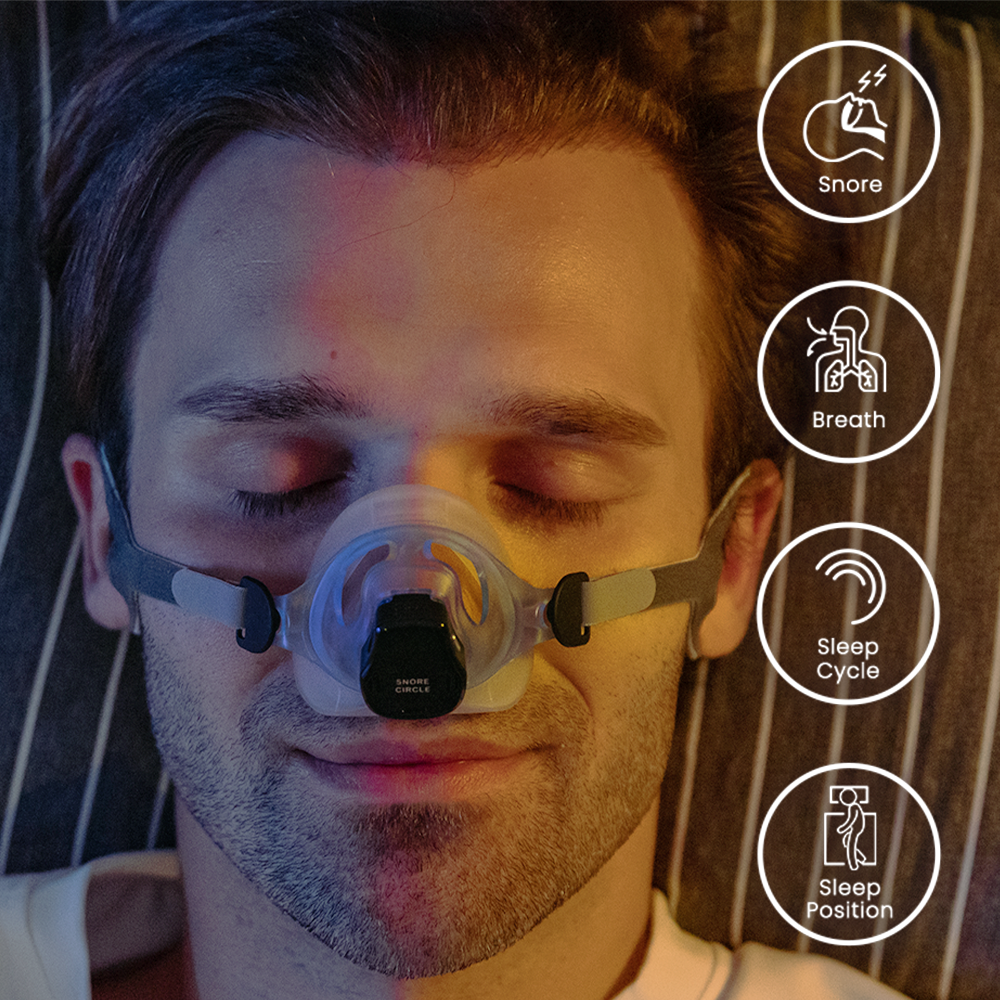
At-Home Sleep Apnea Monitor
A home sleep apnea test is a portable breathing monitor you wear overnight. It is designed to help diagnose obstructive sleep apnea at home. As you sleep, the device monitors your breathing and oxygen levels to detect and measure pauses in breathing, which are known as apneas. The test calculates an OSA severity score by calculating the average number of lapses in breathing per hour in bed.
SNORE CIRCLE YS21 is a portable sleep apnea monitor. It uses medical-grade sensors to measure and track airflow as you sleep. Our patented AI algorithm helps store, process, and analyze data, which is then presented to users as a professional sleep analysis report to improve your sleep and overall health. So you don’t have to make an expensive visit to the hospital to determine this anymore. Simply use this sleep breathing monitor to monitor potential sleep Apnea at home thanks to its specialist biomedical sensors.
What Is Sleep Apnea?
Apnea means not breathing. An apneic episode is an episode where someone stops breathing for a short time. Sleep apnea is a condition where a person has many episodes during the night where they stop breathing for a short time. This causes their oxygen levels to drop which in turn causes them to wake up just enough to unconsciously take a deep breath to get their oxygen levels back up to normal. The most common type of sleep apnea is obstructive sleep apnea. This occurs when there is an obstruction to air flowing down through the nose, mouth and throat into the windpipe and is often accompanied by loud snoring. Non-obstructive sleep apnea is a less common variant which can occur due to problems with the central nervous system areas which control breathing. In either case the result is a decrease in airflow which causes low blood oxygen levels.
What Are The Effects Of Sleep Apnea?
Sleep apnea causes many symptoms. Some are caused by the effects of repeated episodes of low blood oxygen. When oxygen levels are low this causes the blood vessels in the lungs to constrict. Constricted blood vessels in the lungs cause the blood pressure in the right side of the heart to increase because it is the right side of the heart that pumps the blood to the lungs. Chronically increased pressure in the right side of the heart can damage the thin-walled right atrium, the upper chamber of the right side of the heart, and this can lead to atrial fibrillation. sleep apnea testLow oxygen levels can cause many other symptoms such as headaches and dizziness and can also cause increased adrenaline levels which can cause high blood pressure. Many other symptoms stem from the chronic sleep deprivation associated with sleep apnea. This can cause stress, anxiety, gastrointestinal disturbances, pain syndromes, generalized fatigue, decreased immune system function, and many other symptoms. In fact, it has been said that the effects of sleep apnea are so varied that it can masquerade as almost any other medical disease.
